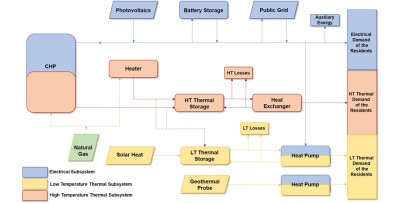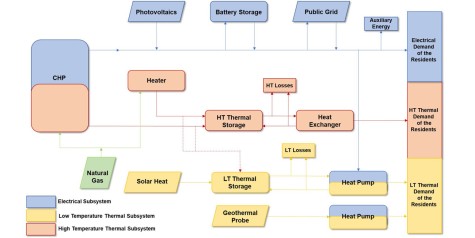In doing so, not only electrical components are mapped, but multimodal models of the smart grids are created. In this way, various cross-sectoral effects between the electrical and thermal subsystems can be investigated, but also other aspects such as electromobility can be integrated. This aspect is pursued in a project which is funded by the Pioneer Fund of TU Darmstadt. A software framework for designing charging infrastructure for electric vehicle fleets links the transport sector with the energy sector.
In addition to the development of operating strategies, the tools developed at the IMS can also be used to support design and dimensioning decisions for energy technology components. Since design and operation of complex systems influence each other, only an integrated consideration of both aspects is appropriate.
Within the context of interdisciplinary cooperation, evaluation systems for the ecological and economic performance of smart grids are developed in addition to the optimization tools. Based on the optimised design and operating parameters, a “fair” comparison of different systems is possible. Standardised key indicators are used for the evaluation, so that comparability is ensured even beyond the methods used at the IMS.
In current research projects, mainly smart grids are investigated in two different contexts. On the one hand, the energy supply of housing estates is being investigated in the projects SWIVT I and SWIVT II and on the other hand, the energy systems of manufacturing industrial companies are being investigated in the projects ETA-Fabrik and PHI-Factory. The tools and methods used have been developed in such a generic way that applications for both types of smart grids are possible through parameterization.




